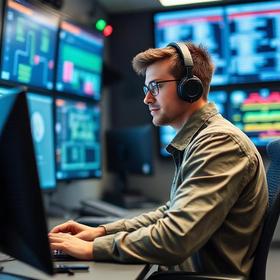- Randall University is a private Christian college in Moore, Oklahoma, United States. Founded in 1917, it offers associate, bachelor's, and master's degrees. It is one of several higher learning institutions associated with the Free Will Baptists.
School Highlights
Randall University serves 330 students (69% of students are full-time).
The college's student-teacher ratio of 8:1 is lower than the state community college average of 18:1.
Minority enrollment is 63% of the student body (majority Hispanic), which is more than the state average of 56%.
Quick Facts (2025-26)
- Enrollment: 330 students
- Private-state tuition: $11,980
- Acceptance Rate: 55%
- Student-teacher ratio: 8:1
- Minority enrollment: 63%
- Source: Integrated Postsecondary Education Data System (IPEDS)
Top Rankings
Randall University ranks among the top 20% of public schools in Oklahoma for:
Category
Attribute
Diversity
School Resources
School Overview
The teacher population of 44 teachers has stayed relatively flat over five years.
Randall University
(OK) Community College Avg.
Carnegie Classification
Baccalaureate Colleges: Arts & Sciences Focus
Baccalaureate/Associate's Colleges: Mixed Baccalaureate/Associate's
Institution Level
Four or more years
At least 2 but less than 4 years
Institution Control
Private not-for-profit
Public
Year Founded
1959
Total Faculty
44 staff
184 staff
School Calendar
Student Body
The student population of Randall University has stayed relatively flat over five years.
The student-teacher ratio of 8:1 has increased from 7:1 over five years.
The Randall University diversity score of 0.78 is more than the state average of 0.76. The school's diversity has grown by 7% over five years.
Total Enrollment
330 students
1,856 students
Student-Teacher Ratio
8:1
18:1
# Full-Time Students
229 students
712 students
# Part-Time Students
101 students
1,144 students
# Enrollment Undergraduate
311 students
248 students
# Full-Time Undergraduate Students
224 students
663 students
# Full-Time Graduate Students
5 students
5 students
# Part-Time Undergraduate Students
87 students
1,058 students
# Part-Time Graduate Students
14 students
14 students
Total Dormitory Capacity
125 students
300 students
% American Indian/Alaskan
6%
8%
% Asian
3%
4%
% Hispanic
19%
11%
% Black
4%
10%
% White
37%
44%
% Hawaiian
12%
8%
% Two or more races
7%
10%
% Non Resident races
8%
1%
% Unknown races
4%
4%
Diversity Score
0.78
0.76
College Completion Rate (Students who graduate in less than 4 years)
n/a
54%
College Completion Rate (Students who graduate in 4 years or more than 4 years)
15%
15%
Average Graduate Earnings (10 Years)
$38,100
$34,700
Tuition and Acceptance Rate
The private state tuition of $11,980 is less than the state average of $14,142. The private state tuition has declined by 25% over four years.
Private State Tuition Fees
$11,980
$14,142
% Students Receiving Some Financial Aid
97%
88%
Median Debt for Graduates
$26,000
$11,000
Median Debt for Dropouts
$6,417
$5,637
Acceptance Rate
55%
55%
SAT Reading
505
505
SAT Math
465
465
SAT Writing
400
400
ACT Composite
18
18
ACT English
17
16
ACT Math
18
17
Source: 2024 (or latest year available) Integrated Postsecondary Education Data System (IPEDS)
School Notes
- School Mascot: Saints
Frequently Asked Questions
How much does Randall University cost?
Randall University's private state tuition is approximately $11,980.
What is the acceptance rate of Randall University?
The acceptance rate of Randall University is 55%, which is equal to the state average of 55%.
What is Randall University's ranking?
Randall University ranks among the top 20% of community college in Oklahoma for: Diversity in US community colleges and Percent of students receiving financial aid.
Recent Articles

The Rise of Technical and Vocational Training in 2025
Explore the 2025 surge in technical and vocational training—enrollment, policy, costs, and why this path is gaining ground for students and parents.

Stackable Credentials: How Community Colleges Advance Careers
Discover how community colleges use stackable credentials to build career pathways, boost earnings, and enable lifelong learning in 2025.

High-Paying Jobs You Can Get with a Community College Degree
Discover top high-paying careers you can launch in 2025 with a community college (associate) degree and high-growth credentials in tech, healthcare and trades.










